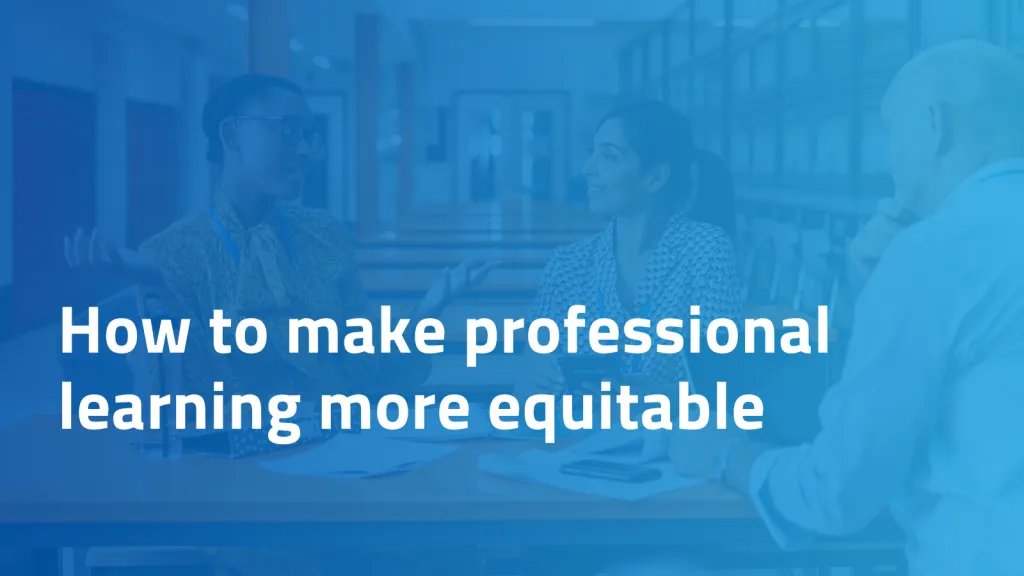How to make professional learning more equitable


How to make professional learning more equitable
Professional learning plays a critical role in supporting educators, especially for teachers of multilingual learners. But in order for it to be truly beneficial to educators (and their students), the opportunities must be accessible and relevant to the individuals involved - which requires an intentional, equitable approach.
Silvia Romero-Johnson and Mariana Castro, authors of the new book Advancing Equity in Dual Language Education: A Guide for Leaders, recently joined us on the Highest Aspirations podcast to dive into creating equitable professional learning opportunities and specifically designing for educators of multilingual learners.
Four ways to make professional learning more equitable:
Contextual: Programs should be directly linked to classrooms and designed/implemented with educators, rather than to educators.
The professional learning teachers need should be built around the goals of the program of instruction. In this way, it supports the work educators are currently doing rather than adding more while removing valuable work time. Dr. Romero-Johnson also cautions leaders to be mindful of providing teachers time during the day to come to collaborate as a community so they can move directly from professional learning situations to the classroom. While thinking about structure, also include time for reflection so educators can unpack what they are learning.
“We need to create space for people to hear new ideas, but also for people to really play with those ideas, contextualize them and figure out what and how those ideas may apply to their setting.”
Responsive: Consider the needs of the students - and who can best determine those needs.
Multilingual learners are not a homogeneous group. Start by figuring out who knows the individual students’ needs best. Those are the people who should have a voice in setting up their goals. Teachers who work with the students on a daily basis see them most clearly as learners. Meanwhile, parents and families see a different side to students in their home life and can likely work in partnership with educators to fill in gaps of understanding.
“It's almost like a coin with two sides and on one side are the idea of the goals and all those structures that we have and on the other side is the voices, the voices who are informing those goals and that professional learning."
Collaborative: Bring together different voices to work together to best understand students’ experiences and uncover their strengths.
“To learn about the past, we don't just have historians, right? Sometimes we have archeologists, we have sociologists, we have people who come from multiple different venues and they look at the world in different ways. To get a good picture of the past, we need all those perspectives so that it's a richer picture.”
Romero-Johnson and Castro use this historical-approach to highlight the importance of collaboration when designing professional learning opportunities, specifically when working with language learners. It is also a piece often missing in these spaces. Building in time and structures for experts to come together to share data and observations before creating a hypothesis of practice is the best way to make equitable, well-informed decisions.
Intentionally Changing: Teaching is an evolving practice, so all professional learning should be a cycle of planning, executing, and reflecting.
Reflecting on the effectiveness of new or old teaching practices should be happening on an ongoing basis and built into professional learning programs or plans. Dr. Romero-Johnson explains that being connected to one’s practice means engaging in an iterative process of identifying the areas of highest leverage and setting new goals to encourage growth and improvement. This includes being intentional about addressing our own experiences and biases.
“We can build a system that's going to help everybody integrate into the system that already exists, but what a missed opportunity if we are not actually thinking about how we change the society and how we combat those issues that we see as bumps in the road, as sometimes obstacles for our students to be successful.”
Resources mentioned in the conversation:
- Advancing Equity in Dual Language Programs: A Guide For Leaders
- Twitter: @sromerojohnson and @ladracastro
- Street Data: A Next-Generation Model for Equity, Pedagogy and School Transformation by Jamila Dugan and Shane Safir
- Pedagogy of the Oppressed by Paulo Freire
- Borderlands by Gloria Anzaldúa